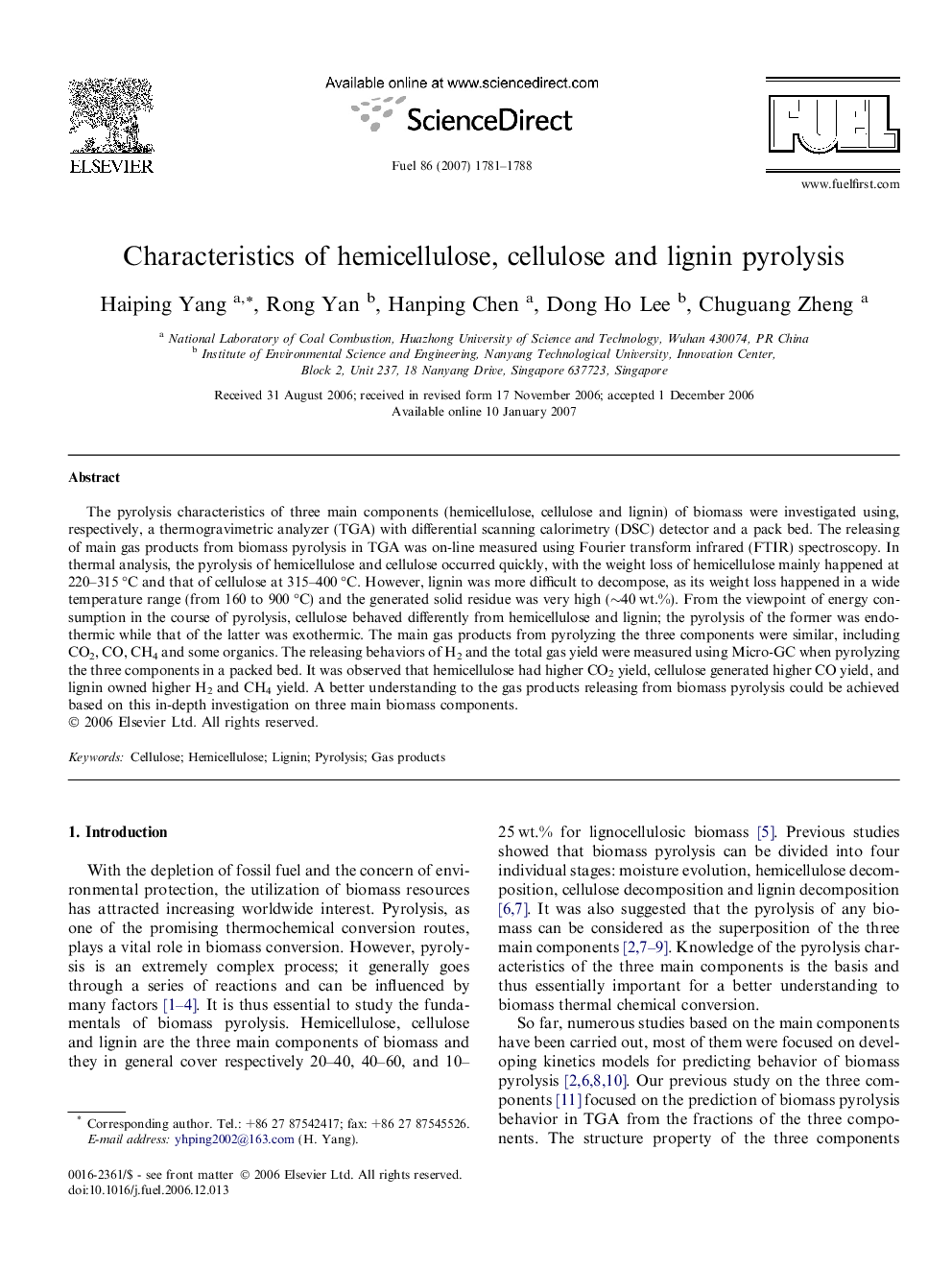| Article ID | Journal | Published Year | Pages | File Type |
|---|---|---|---|---|
| 207610 | Fuel | 2007 | 8 Pages |
The pyrolysis characteristics of three main components (hemicellulose, cellulose and lignin) of biomass were investigated using, respectively, a thermogravimetric analyzer (TGA) with differential scanning calorimetry (DSC) detector and a pack bed. The releasing of main gas products from biomass pyrolysis in TGA was on-line measured using Fourier transform infrared (FTIR) spectroscopy. In thermal analysis, the pyrolysis of hemicellulose and cellulose occurred quickly, with the weight loss of hemicellulose mainly happened at 220–315 °C and that of cellulose at 315–400 °C. However, lignin was more difficult to decompose, as its weight loss happened in a wide temperature range (from 160 to 900 °C) and the generated solid residue was very high (∼40 wt.%). From the viewpoint of energy consumption in the course of pyrolysis, cellulose behaved differently from hemicellulose and lignin; the pyrolysis of the former was endothermic while that of the latter was exothermic. The main gas products from pyrolyzing the three components were similar, including CO2, CO, CH4 and some organics. The releasing behaviors of H2 and the total gas yield were measured using Micro-GC when pyrolyzing the three components in a packed bed. It was observed that hemicellulose had higher CO2 yield, cellulose generated higher CO yield, and lignin owned higher H2 and CH4 yield. A better understanding to the gas products releasing from biomass pyrolysis could be achieved based on this in-depth investigation on three main biomass components.
